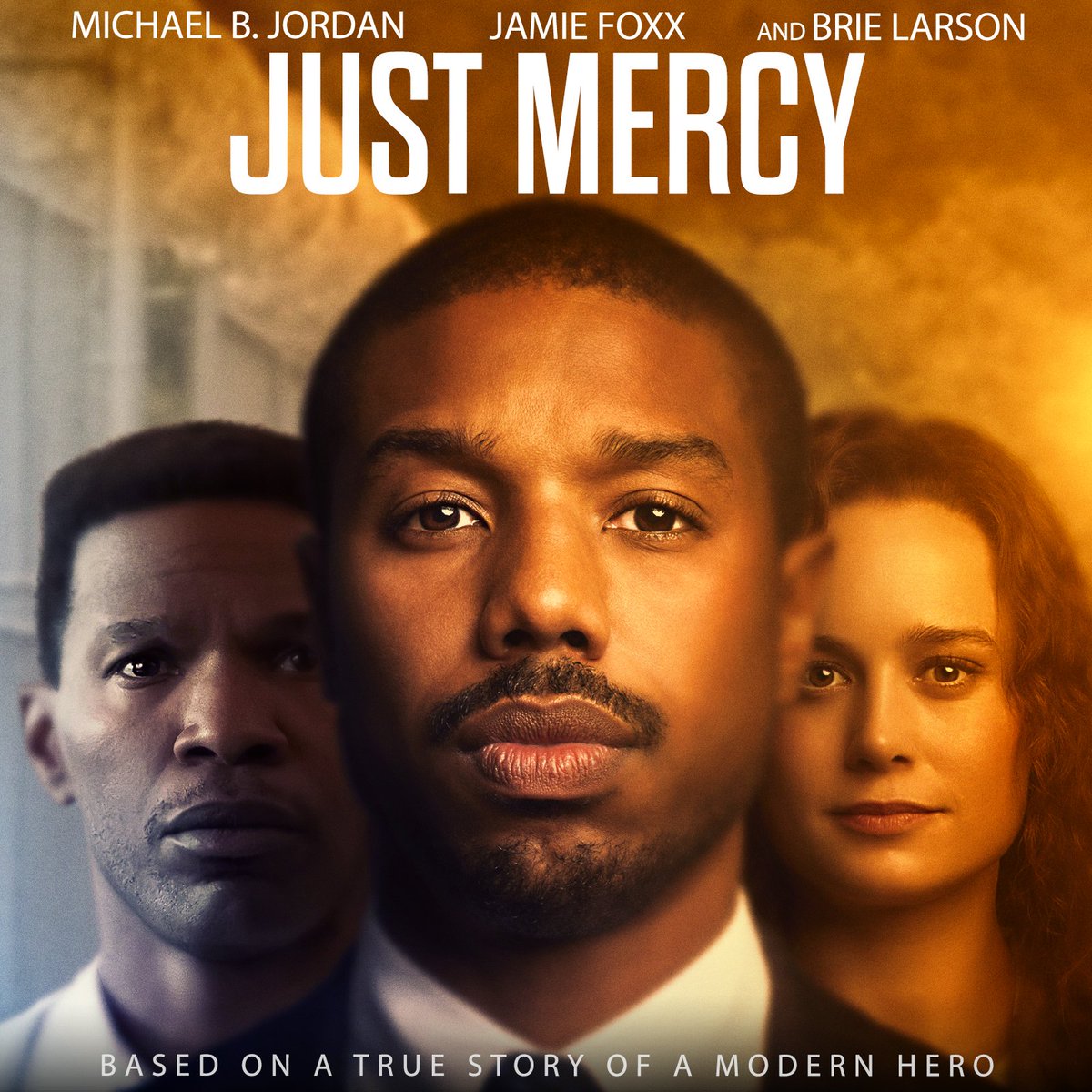Directed by: Destin Daniel Cretton

Several weeks ago, I brought to your attention the movie Fruitvale Station, a film based on the true story of the police killing of Oscar Grant, III, on a train station platform in Oakland, California. The star of that film is the superb Michael B. Jordan, who played the down-on-his luck Grant on the last day of his life. Station deals of course with many of the themes we find in today’s news: police behavior, what it means to live as a young, black male in America at this moment, and the systemic problems in American society that continue to disadvantage Blacks in so many different ways.
A more current film (2019) telling a slightly older true story is Just Mercy, the story of a young, Harvard-trained lawyer named Bryan Stevenson (also played by Michael B. Jordan), who makes it his life’s work to help those who have been incarcerated without sufficient legal representation. Most of these are also black, as is Stevenson, and this film centers on one particularly well-known case in Stevenson’s early career in which a black man, Walter (Johnny D.) McMillian, played by Jamie Foxx, is convicted of the murder of a young woman in Monroeville, Alabama, with no evidence and only the testimony of a convicted felon linking him to the crime.
Just Mercy delves more deeply than Fruitvale Station into the problems inherent in a justice system based on the judgments of people—some good, some bad—who are all influenced greatly by the same surroundings, institutions, history, and feelings as each other. The desperate need of the residents of a small Alabama town creates a situation in which a sheriff, a district attorney, a judge, and worst of all a jury of twelve, white inhabitants convict a man against all objective reason, all evidence, and all legal argument, sentencing him to death by electric chair. (The judge, to show the anger and fear of the white community pressure on the case for “justice”, imposes this sentence after the jury had recommended life imprisonment.) No black people are involved in the process at any point, and no one from outside the community, devastated by the seemingly random murder of an innocent, 18-year old white girl. Everyone in the white community of Monroeville thought they had gotten their killer, and they were now safe again. No one in the black community thought so about themselves on either count.
The murder occurred in the town in which Harper Lee, like many of those who live in towns like Monroeville throughout the South, was born, raised, and died. Several times, when Stevenson first comes to Monroeville, he is asked, if he has seen the “Mockingbird museum”; the sign he drives by as he enters the town proudly proclaims: “Home of To Kill a Mockingbird.” The residents exult in this signal of their fairness and the lack of any racism in their town.
Stevenson sees things otherwise, however. As he digs more and more deeply into the facts surrounding the case, the more convinced he becomes that McMillian is innocent. However, as he tries to work through the system to prove it, he comes up against strong opposition, especially from the District Attorney, Tommy Chapman, and the nefarious Sheriff Tate, who represent two different forms of racism current in America today. Chapman, played by Timothy Spall, does not want to go back to the case because it is solved and done with; to re-open it would cause him all sorts of social and reputational trouble among the white community of Monroeville. Never mind the black community; the black lives there simply don’t matter.
Sheriff Tate, along with the guards at the prison where McMillian is held and the state troopers who later stop Stevenson for no reason at all, are more straightforwardly racist, and the movie has several moments in which the lives and families both of Stevenson and his white, female sidekick, Eva Ansley, played brilliantly by the incomparable Brie Larson (Room, Captain Marvel), are frightfully threatened. Chapman and Tate represent the officials of a system that is loath to disturb the good, quiet life of Monroeville’s white population, in order only to find justice for a falsely accused black man.
The film is not perfect; it goes on too long with too many speeches and scenes of triumph at the end, and some of the characters and their portrayals are uneven in quality, but the performances of the principals, the multitude of interesting themes, and much of the writing are so powerful that the movie is one of my favorites among the many, many films that deal with the idea of racial justice. Two things I appreciate greatly about this film are the way it so transparently demonstrates the strength of two institutions in the African-American community, which may be primarily responsible for the survival of so many black Americans today with such nobility and strength against such terrible societal odds: the family and the Christian faith.
There is not enough space to explore these two in great detail here, but the viewer would do well to look for the somewhat buried, but clearly discoverable, hints in the movie that McMillian was sustained in prison by a devoted, faithful family and that Stevenson was able to keep going because of the way he had been brought up by his believing father and mother and by the knowledge that he had been called to this work, whether he succeeded or not. An appeal to the concept of family even plays a major role in the events leading to McMillian’s release, and prayer has a prominent, if not overwhelming place in the same events. Look for these two themes throughout this heartbreaking, but hopeful, film. Just Mercy will reward your effort.
Drew Trotter
July 1, 2020